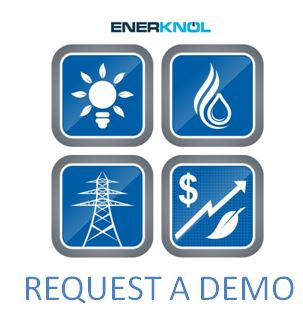Unlimited Energy?
 Solar energy is the most abundant energy resource on earth. 173,000 terawatts of solar energy strikes the Earth continuously. Sounds like a lot but what does that mean? That is a fairly obscure number to most who don’t know what a terawatt is. It consists of more than 10,000 times the world’s total energy use. That is a lot of energy. You would think with that source of what seems to be unlimited energy, we would not have to ever worry. In theory, we don’t. We can grab the sun’s rays and use them. So what is the real challenge? Well, the problem is in harnessing this amazing source in a cost effective way, for one. Now, we say that, but compared to what? The comparison is oil and natural gas because they are currently cheaper. But would we be saying anything different if they weren’t? The answer is probably not. Think about this: If oil and gas dried up, we would be forced to use other forms of energy and solar, being an unlimited source, would probably win out. But since, today, it costs a little more to use, and more importantly the oil and gas infrastructure is firmly in place, we may not consider solar immediately. If this were life or death, paying more would not be the issue, but today it is not.
Solar energy is the most abundant energy resource on earth. 173,000 terawatts of solar energy strikes the Earth continuously. Sounds like a lot but what does that mean? That is a fairly obscure number to most who don’t know what a terawatt is. It consists of more than 10,000 times the world’s total energy use. That is a lot of energy. You would think with that source of what seems to be unlimited energy, we would not have to ever worry. In theory, we don’t. We can grab the sun’s rays and use them. So what is the real challenge? Well, the problem is in harnessing this amazing source in a cost effective way, for one. Now, we say that, but compared to what? The comparison is oil and natural gas because they are currently cheaper. But would we be saying anything different if they weren’t? The answer is probably not. Think about this: If oil and gas dried up, we would be forced to use other forms of energy and solar, being an unlimited source, would probably win out. But since, today, it costs a little more to use, and more importantly the oil and gas infrastructure is firmly in place, we may not consider solar immediately. If this were life or death, paying more would not be the issue, but today it is not.
What is Solar Power?
Solar power is energy from the sun that is converted into thermal or electrical energy. Solar energy provides significant amounts of electricity with no direct greenhouse gas emissions, making it the cleanest source available. It also happens to be the most abundant, as we previously stated, unlimited. Providing it as a cost effective alternative to fossil fuels, however, has been a struggle. Because we have a choice, we choose to use fossil fuels. That should begin to change, maybe slowly. Today’s technology is becoming more cost effective, especially in the U.S., which has some of the richest solar resources in the entire world. We are also becoming a more socially responsible country, whether we like it or not.
Why is this important?
Simple. Solar generates electricity, provides light and heat and works for both domestic and commercial applications, saving the environment as well as lives by supporting a cleaner planet. As I write this, I realize that many people I know will read this, so I must also state that I am no better than anyone else. The deal is simple. I like driving a car that looks like a car and not some turtle bubble thing the car companies are producing. I could buy a Tesla, except I can’t afford one. These electric cars look terrible. Think about it. Do the car companies purposely design electric cars to look bad, in cahoots with the oil companies in an attempt to keep people from buying them? It would not make sense. Any designer that was that bad would not have a job for long. I have a choice and I choose to use gas. As they make nicer looking cars, we will begin to move toward other types of energy sources to power them. This, however, will be another blog post.
A Little Solar History
The first practical solar cell was built by Bell Laboratories in 1954. At that time The New York Times proclaimed the milestone, “the beginning of a new era, leading eventually to the realization of one of mankind’s most cherished dreams — the harnessing of the almost limitless energy of the sun for the uses of civilization.” This ran on page one of its April 26, 1954 issue. End of story. We are saved, right? Not quite.
One of the early adopters of solar technology was the space industry. Like most new technologies, the government adopted or created it. Maybe from aliens? Conspiracy theories continue… Anyway, in the 60s, the space industry began to use solar to provide power for their spacecraft. As a matter of fact, the Vanguard 1, which was the first satellite powered by solar cells, had logged more than 6 billion (yes, I said billion!) miles and is still going strong, orbiting earth right at this moment. It remains the oldest man-made satellite out there. So, in the mid-50s, this was going to revolutionize the world, right? Well, some 60 years later, we are beginning to see this come to fruition.
U.S. Solar Industry
Being the biggest economy with more than 300 million souls and innovation, the U.S. will obviously take the lead and already has, by sheer numbers. The current demand for solar is at an all-time high in the U.S. Investment tax credits for solar energy projects, federal funding programs and renewable energy portfolios have increased the industry’s ability to complete utility-scale, residential and commercial operations. In 2013, solar accounted for 29 percent of new electricity generation capacity and the solar photovoltaics (PV) market grew by 41 percent over 2012. The Interior Department has identified more than 19 million acres of public lands with excellent solar energy potential and has approved 25 utility-scale solar energy projects since 2009, with an additional 80 applications under review for projects in Arizona, California and Nevada. We will continue to see the west and southwest expand solar. This is primarily due to the available land and the fact that it is hot and sunny.
Solar Challenges
The U.S. solar market continues to face challenges as well as many incredible opportunities in front of it. As prices become more favorable, solar is becoming a viable solution and economical energy choice for both homeowners and businesses alike. Some of the biggest challenges still lay in the regulation and every dollar that gets relieved by policy helps this industry. Just hooking solar to power grids as well as the zoning and permitting of projects plays a huge part in stalling major solar projects from popping up all over the U.S. The U.S. has regulation upon regulation and trying to untangle this web of government offices and all the legislation involved is near impossible. Currently, there are more than 2,000 federal, state and local government offices passing policy on energy related items. Each policy just adds another layer of questions. The simple truth is this: Releasing a report on its “Going Solar in America series” on January 13, 2015, the North Carolina Clean Energy Technology Center stated that rooftop solar is already cheaper than utility rates in 42 of the 50 cities, and this is expected to increase as solar cost continues to decline and utility rates increase. So, if that is the case, what is the problem? There is a lack of education, regulation that makes it difficult to navigate and maybe utilities with big lobbying budgets. Who knows? The numbers appear to be there.
 Fast Pace Should Mean Good Investment
Fast Pace Should Mean Good Investment
In the third quarter of 2014, installations were up more than 41 percent year-over-year, which translates to the second largest quarter for solar installations in the history of the market. In addition, more than 36 percent of all new electric-generating capacity in the U.S. through the first three quarters of 2014 came from solar. So, the utilities are adopting, adapting and helping make this a more affordable energy choice.
TAN is one of the most popular Solar ETFs and is a place to look if thinking of investing in the rise of solar power. Though the industry is growing, the ETF has dropped more than 34 percent from its high. Is this a time to buy? 2015 and the regulatory landscape will have an impact on this. Having access to this information will be critical. People will also be looking at the oil and gas industry to bottom feed. While investing in solar may be the more prudent choice, the retail-shopping public typically looks for the home run. As you can see, for more than a year, USO, an oil ETF moved between $31 and $40 then dropped more than 57 percent. During that same time, TAN, the solar ETF moved from $15 to $50. While the price of oil has dropped globally, has solar suffered from simply being an energy play?
The Regulatory Landscape
 Regulation is a large part of the issue for a homeowner. As long as they can seed the ROI, it is not an issue, but for the investments in this space and the companies already operating, regulation can be a back breaker. Keeping it in front of you is critical to the ongoing success of anyone entering this space. Understanding the regulatory hurdles and all the legislation that is passed is also critical for investors, whether it is a $2 billion hedge fund or Sally and Bob Johnson buying a solar ETF. Having this info at your fingertips can be the difference in paying the bills the next month.
Regulation is a large part of the issue for a homeowner. As long as they can seed the ROI, it is not an issue, but for the investments in this space and the companies already operating, regulation can be a back breaker. Keeping it in front of you is critical to the ongoing success of anyone entering this space. Understanding the regulatory hurdles and all the legislation that is passed is also critical for investors, whether it is a $2 billion hedge fund or Sally and Bob Johnson buying a solar ETF. Having this info at your fingertips can be the difference in paying the bills the next month.
Take a look at some of the favorable federal milestones. This is just a drop in the bucket. There are thousands of other federal, state and local policies that also pass.
A glance into the biggest solar state – California
The numbers in California are staggering. There are currently more than 2,063 solar companies, employing 47,223 people. These include 381 manufacturers, 86 manufacturing facilities, 136 distributors, 118 project developers, 990 contractor/installers and 438 in other activities like engineering, legal and financing.
 California Solar – The Sunshine State Making Clean Energy
California Solar – The Sunshine State Making Clean Energy
California continues to be the leading solar market in the United States. A significant number of sunny days combined with legislation that supports solar policies have created an ideal solar market. As older fossil-fired and nuclear generation plants begin to be put out to pasture, statewide carbon reduction efforts continue to grow and load growth increases, we will see the need for additional renewable energy projects to become available.
Looking Ahead
The solar investment tax (ITC) will expire in 2016. We should see a continued surge in new solar development projects. State policies continue to play an important role in changing the solar market landscape in a hurry by establishing an aggressive Renewable Portfolio Standard (RPS), offering financial incentives for solar-generated electricity and solar capacity installations, and by crafting net metering rules that encourage distributed solar adoption. California and New York, for example, have experienced significant solar expansion as a result of similar state policies. Further growth of the industry will hinge on continued policy support mechanisms of federal and state governments.

Donovan Lazar | Chief Revenue Officer
dl@enerknol.com | 212-537-4797 ext. 8[/vc_column_text][/vc_column][/vc_row]








